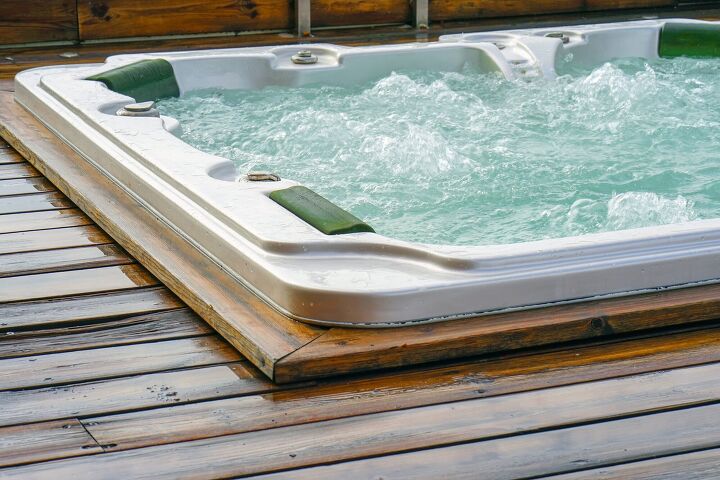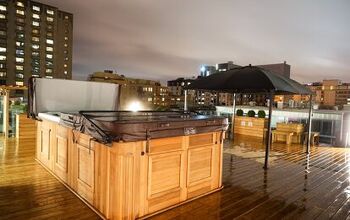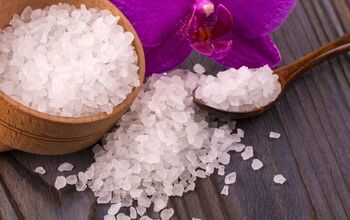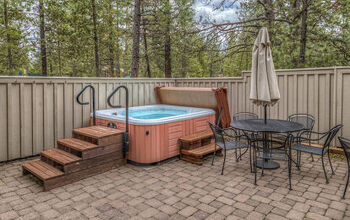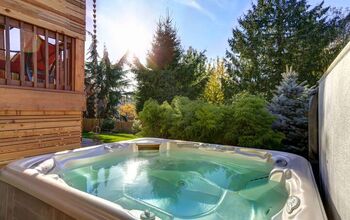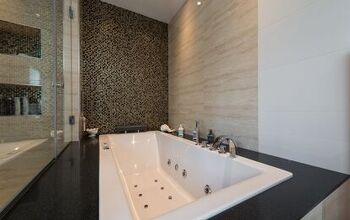Are Hot Tubs Expensive To Run? (Find Out Now!)

There are very few things more relaxing than lounging in your own private hot tub, whether you’re enjoying a romantic evening or soothing your aching muscles. Despite the host of benefits that come with owning a hot tub, the perceived costs often prevent many homeowners from buying one in the first place. If you’re considering installing a hot tub in your outdoor space, you’re likely asking yourself: Are hot tubs expensive to run?
Fortunately, hot tub energy efficiency has come a long way in the last several years. Of course, the actual cost of running and maintaining a hot tub will depend on a number of factors. Though, when you plan for the ongoing expenses, owning a hot tub is actually much more affordable than many assume. Most recent models only cost around $23 a month, or less than $1 per day on average to run.
However, there is much more to operating a hot tub than monthly heating costs. In order to determine the true cost of running a hot tub, you must also consider the cost of water, chemicals, maintenance, repairs, and even insurance. Continue reading for our comprehensive guide on how much it costs to run a hot tub, so you can make an informed decision about whether or not the expense is too much for you to take on.
Do You a Need Pool, Spa, or Hot Tub Contractor?
Get free, zero-commitment quotes from pro contractors near you.

How Much Does It Cost to Run a Hot Tub?
The cost of running a hot tub depends entirely on the type of hot tub you have, as these units vary in terms of functionality, materials, dimensions, and additional features. While the higher-end models have higher upfront costs, these hot tubs may be less expensive to run and require less maintenance down the road.
As such, it’s important that you choose your preferred hot tub based on your desired functionality and features, as well as quality manufacturing. For instance, a tub with advanced insulation and a dedicated circulation pump can save you money because of its increased energy efficiency.
With this in mind, the monthly costs of running a hot tub will generally include heating, water and chemicals, maintenance, repairs, and insurance. All of these factors help to keep your hot tub in proper working order and ensure that you get the most out of your investment.
Monthly Heating Costs
The cost to heat your hot will depend on a couple of factors: how often the tub is used, the temperature that you heat the spa to, and the unit price per kilowatt hour. In most cases, the average cost to run a hot tub is approximately $1 per day, or between $20 and $30 extra on your monthly electricity bill. Though, if you have an especially old hot tub or one that has not been well taken care of, your monthly heating costs could be as much as $50 per month.
If you keep the heat in your hot tub running at all hours of the day, your electric bill is going to be on the higher end of the spectrum. Fortunately, there are ways to cut costs dramatically like reducing the water temperature by a few degrees or setting the hot tub’s circuit timer to only heat the tub during off-peak hours (more on this below).
Check out our guide: Are Hot Tubs 110 Or 220 Volts?
Water and Chemicals
Filling your hot tub up with water is not a one-time task. Your hot tub must be drained and cleaned every three to four months on average. This means that, in addition to monthly heating costs, you also have monthly water costs that must be considered. In order to estimate your monthly water cost, simply take the hot tub’s capacity and multiply it by the number of times that you drain and refill it throughout the year. Then, divide the total by 12 to yield your monthly water use and multiply by cost per gallon.
For example, if you own a 500-gallon hot tub, clean it about four times per year, and the cost per gallon in your area is 0.2 cents, you can expect to pay less than 35 cents extra on your monthly water bill to run a hot tub. In addition to water, chemicals are an important expense to consider. Chemicals like chlorine and bromine are crucial to sanitizing and balancing the water in your hot tub.
Depending on how often your hot tub gets used, you will typically pay between $10 and $20 per month on necessary chemicals.
Maintenance and Repairs
Aside from ongoing expenses like water and chemicals for your hot tub, the filter in your hot tub needs to be replaced every 1 to 2 years. Depending on the model you have, your hot tub may have one or multiple filters. Hot tub filters usually cost between $20 and $60 each. In order to extend their life and keep your hot tub operating as efficiently as possible, it’s important that the filters get cleaned each time you drain and refill your hot tub.
Overall, expensive repairs are pretty rare with hot tubs. If you already have a small savings set aside for your home maintenance costs, you should be covered with hot tub repairs.
Insurance
Similar to swimming pools, hot tubs will increase the cost of your liability insurance. Make sure that you consult your insurance company representative to determine the premium increase that you can expect from owning a hot tub. In most cases, the annual increase is less than $20.
How to Keep Hot Tub Expenses Low
While it can be difficult to know exactly how much your specific hot tub will cost to run, there are a number of tactics you can implement to help keep your monthly hot tub expenses as low as possible. These include:
- Only heat your hot tub during off-peak hours. Oftentimes, electricity is cheaper during the early morning or late evening hours when less people are using it. With this in mind, you can save money on your electricity bill by heating your tub during these hours. If your hot tub has a circuit timer, you can use this to set the specific times you want your spa to be heated.
- Invest in a quality hot tub cover. This is often the first step to saving money and conserving energy. A hot tub cover will trap heat, and prevent both the water and chemicals from evaporating.
- Try using a thermal blanket. Placing a thermal blanket in between the water and the hot tub cover can serve as an additional layer of insulation. Some thermal blankets double as solar blankets, meaning they will use the sun’s power to heat up the water in your tub and reduce the stress on your heater.
- Shield the tub from wind. Use a barrier screen or plant some bushes around your hot tub to create a windbreak. The more air that circulates above your hot tub, the faster the water will evaporate. Wind can also cause the temperature of the water to cool down and force the heater to work harder to maintain the optimal temperature.
Do You a Need Pool, Spa, or Hot Tub Contractor?
Get free, zero-commitment quotes from pro contractors near you.

The Optimal Temperature
Some suggest that it’s cheaper to keep your hot tub running 24/7. However, this really depends on the temperature you keep it at and how of you use the tub. If you use your hot tub…
- Once a week, consider turning it off between uses.
- Once a day, keep the tub at around 95 degrees Fahrenheit.
- Once every two to three days, keep the tub at around 80 degrees Fahrenheit.
Of course, you can increase the hot tub temperature before you get in, but these temperatures ensure that you’re not wasting too much energy.
Related Guides

Jessica considers herself a home improvement and design enthusiast. She grew up surrounded by constant home improvement projects and owes most of what she knows to helping her dad renovate her childhood home. Being a Los Angeles resident, Jessica spends a lot of her time looking for her next DIY project and sharing her love for home design.
More by Jessica Stone



